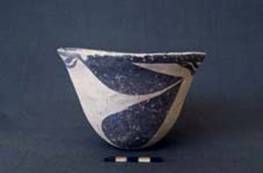


研究者 > 西秋 良宏 > Nishiaki Lab. Top > Kashkashok II
Tell Kashkashok II, the Upper Khabur, Syria
Yoshihiro Nishiaki
The University Museum, The University of Tokyo, Japan
The excavations
| The archaeological site of Tell Kashkashok II, approximately 20 km northwest of Hassake, Syria, was excavated by the University of Tokyo mission under the direction of Professor Toshio Matsutani in 1987 and 1988, prior to the construction of the dam on Wadi al-Awaj, a tributary of the Khabur river. The site comprises a small mound of about 100 m by 80 m, with a maximum height of less than 4 m from the adjacent wadi plain. The two seasons of excavations defined two major occupation periods. The earlier was the Proto-Hassuna phase of the Pottery Neolithic period (the mid-7th millennium BC) and the later one was the Ubaid to the Gawra period (5th millennium BC). While the Pottery Neolithic occupation was represented by an early farming village, the remains of the Ubaid to the Gawra period were all derived from an extensive cemetery that covered much of the mound. |
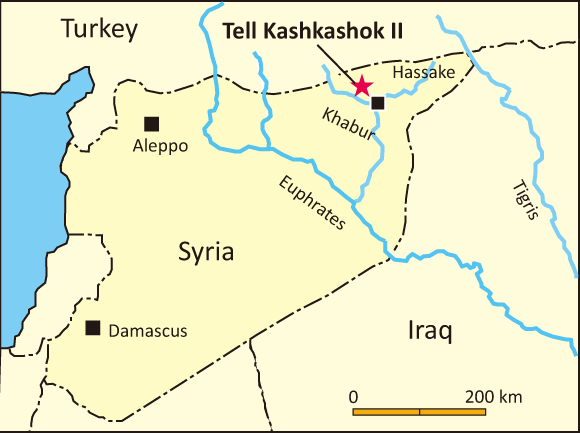 Fig. 1 Map showing the location of Tell Kashkashok |
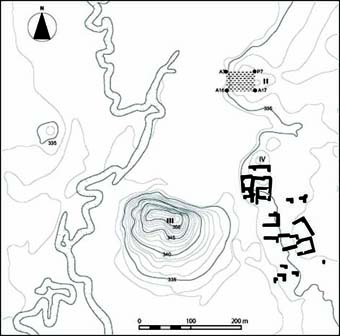 Fig. 2 Contour map of Tell Kashkashok I to IV. The shade indicates the excavated area at Tell Kashkashok II |
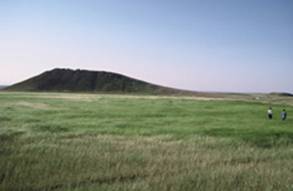 Fig. 3 Tell Kashkashok IIII, the largest mound, viewed from the north |
 Fig. 4 Tell Kashkashok II viewed from the north |
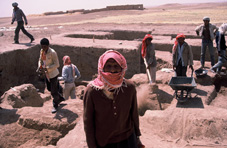 Fig. 5 Syrian colleagues at work in Tell Kashkashok II |
The Pottery Neolithic
| The earliest inhabitants of Tell Kashkashok II lived in mud-walled houses with small rectangular rooms. Unfortunately, the later tomb pits had almost completely destroyed these structures, so that only a general idea about them could be determined. The building material was not of mud-brick but packed mud. Room floors were often coated with gypsum-plastering. White gypsum plaster was also applied to the interior of round pit- binsfound in one corner of the rooms. A couple of large pits were dug nearby these houses probably obtain soil for mud-walls. |
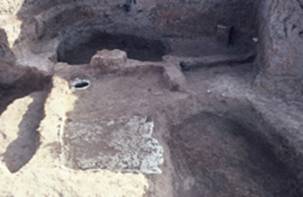 Fig. 6 Neolithic structures from Tell Kashkashok II, consisting of mud-walls, a gypsum-plastered floor and a lined storage pit. All badly damaged by later grave pits. |
The tool kit of this period included a variety of pottery, flaked and ground stone artifacts, bone tools, stone bowls and clay artifacts. The pottery
consisted of abundant plain coarse ware and a smaller amount of painted pottery with red to brown geometric decorations. The lithic industry
showed a heavy reliance on flint flake production, but also included obsidian blades and blade tools that were probably imported from the southeast
Anatolian mountains. Analysis of the faunal and floral remains indicates a subsistence economy mostly based on farming, supplemented by
occasional gathering and hunting.
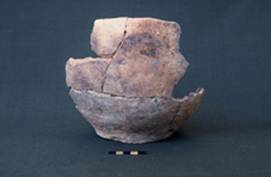 Fig. 7 Neolithic coarse ware pottery from Tell Kashkashok II |
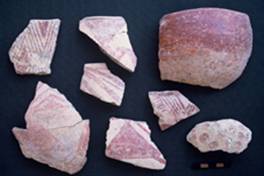 Fig. 8 Neolithic painted sherds from Tell Kashkashok II |
The overall features of the Pottery Neolithic occupations of Tell Kashkashok II closely resemble those of Proto-Hassuna sites such as Tell Khazne II
and Tell Bouqras on the Khabur, and Umm Dabaghiyah and Telul eth-Thalathat, Iraq. More recent surveys have documented a dramatic expansion of
Proto-Hassuna settlements into the flat steppe environments of the Khabur basin, perhaps resulting from a shift in subsistence in the 7th millennium
BC. The Neolithic village of Tell Kashkashok II, founded on virgin soil, is thus considered as representing one of such settlements.
The Ubaid to Gawra cemetery
| About 1500 years after the abandonment of the Neolithic settlement, the mound of Tell Kashkashok II was used as a communal cemetery in the Ubaid to Gawra period. As no domestic structures were discovered, the inhabitants who buried the dead must have lived in a different place, most likely at Tell Kashkashok III, where the excavations by Dr . Antoine Soleiman of the Aleppo Museum identified an Ubaid to Gawra settlement. |
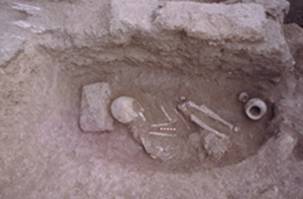 Fig. 9 Ubaid tomb from Tell Kashkashok II |
| More than 200 tombs were discovered at Tell Kashkashok II by the Japanese excavations. They consistently showed a unique method of construction, best described as a shaft tomb with a horizontal burial chamber. The shaft, which was perhaps nearly 2 m below the original ground level, was oval in plan, about 1.5 m by 1 m, with the longitudinal axis in an west-east direction. The chamber extending southwards at the bottom of the shaft, was also oval in plan about 1.5 m by 1.2 m and around 80 cm high. The body was placed in the chamber in a flexed position with the upper body to the west and the face to the north. The funerary goods were almost always represented by pottery, consisting of jars and bowls. The burial chamber was closed by a line of mud-brick wall, and its northern side was often plastered with packed mud. The size and the construction method, as well as the composition of funerary goods, differed little by the tombs. As far as the burial practice is concerned, the community seems to have belonged to a rather egalitarian society in this period.
|
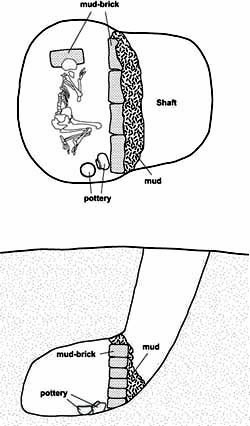 Fig. 10 Schematic representation of a typical Ubaid tomb from Tell Kashkashok II |
Tombs with similar structures have been also discovered at Tell Mashnaqa, the Middle Khabur, and Telul eth-Thalathat, Iraq, indicating that the same
burial custom was maintained over a large area of North Mesopotamia. Nevertheless such an extensive cemetery as that of Tell Kashkashok II has been
rarely excavated.
Further reading
- Matsutani, T. (ed.) (1991) Tell Kashkashok, the Excavations at Tell No. II. Tokyo: University of Tokyo Press.
西秋研究室トップ | Nishiaki Lab. Top | Tell Seker al-Aheimar | Tell Kosak Shamali | Tell Kashkashok II
